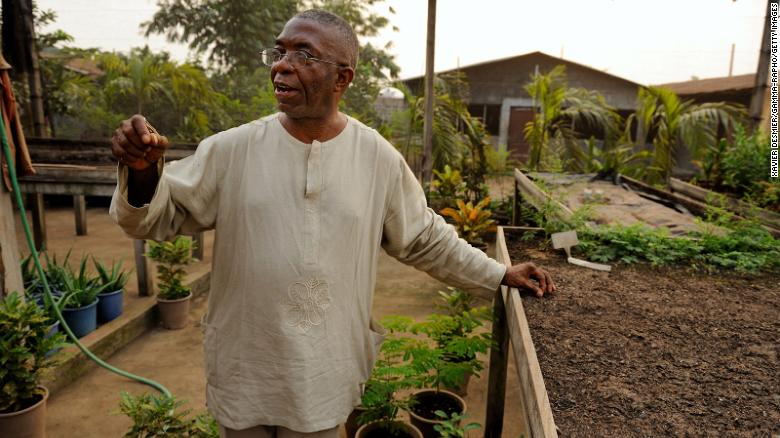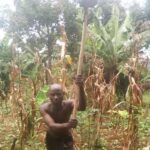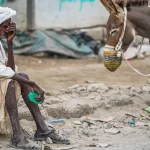Thirty-five years ago, with just one acre of land, a couple of seeds and a bucket of hope, one Nigerian-born scientist began his quest to trample famine on his continent.
News of the drought across Africa in the early 1980s troubled Father Godfrey Nzamujo, then an expatriate priest and professor at the University of California, Irvine.
“People were dying of starvation. I couldn’t stand it,” Nzamujo told CNN.
Equipped with a microbiology PhD and his faith, he travelled back to Africa in search of a solution.
There, he found a continent ecologically rich, diverse and capable of producing food.
He believes drought wasn’t the only reason for widespread hunger, and that sustainability had been left out of the equation.
Nzamujo began devising a “zero waste” agriculture system that would not only increase food security but also help the environment and create jobs.
In 1985, he traded in his professor post for gardening gloves and started his sustainable farm “Songhai” in the West African country of Benin.
What is zero waste farming?
At the core of the idea of sustainable agriculture is designing farms that mimic the way natural ecosystems work.”One really important piece of that is structuring farms to persist without external inputs like fossil fuels or toxic chemicals,” said Liz Carlisle, an assistant professor in Environmental Studies at the University of California, Santa Barbara.
Those can create problems that degrade both the food system and the surrounding environment, she said. Zero waste agriculture, a type of sustainable farming, takes these principles even further by introducing a regenerative loop, where waste in one area produces feed, fuel or nutrients for another.
Zero Waste Farming

“The output of one area, like the livestock production, would feed into either energy production or fertilizer for crops,” explained Ronnie Brathwaite, a senior agriculture officer at the UN Food and Agriculture Organization. “
The crop residues will be used in either energy production or livestock feeding, or even making other products.”
“Zero waste” is a buzzword today with the spotlight on climate change. However, this type of farming is not new. It was in place globally for millennia, until farms, especially in developing countries, moved toward synthetic fertilizer use and single crop production during the Green Revolution of the 1950s, according to Brathwaite.
During this period, growing populations generated a need to intensify the food supply quickly. Industrial agriculture created high yields, but it came with a high price, including large amounts of waste from crop production and livestock, Brathwaite explained.
“What was not taken into account was the impact on the environment and the very resources that support it, like soil and water,” he said.

Increasing food security
With more than 820 million people facing hunger globally, according to the UN, coupled with a rapidly increasing population, comes the need for even more food.
If there was a shift toward more sustainable farming practices, could it keep up with the demand?
Some research has shown this model, when implemented correctly, has the potential to produce almost as much as conventional farming.
Both the UN and independent scientists have called for a paradigm change away from industrial agriculture to sustainable practices in order to help our planet and the food system.
“With zero waste farming, I think we’re in a better position to satisfy the needs of the globe,” Brathwaite told CNN. “We can continue to produce similar levels of food to feed a growing population, and we have the advantage of reduction in wastage.”
Nzamujo believes zero waste agriculture is now steadily tackling the issues he set out to defeat three decades ago: hunger, unemployment and environmental degradation. And he wants to see it go further.”Yes, it is a revolution.
But it’s a revolution that is not them against us,” he said. “It is a revolution that is inviting every people to a new way of seeing things.”














